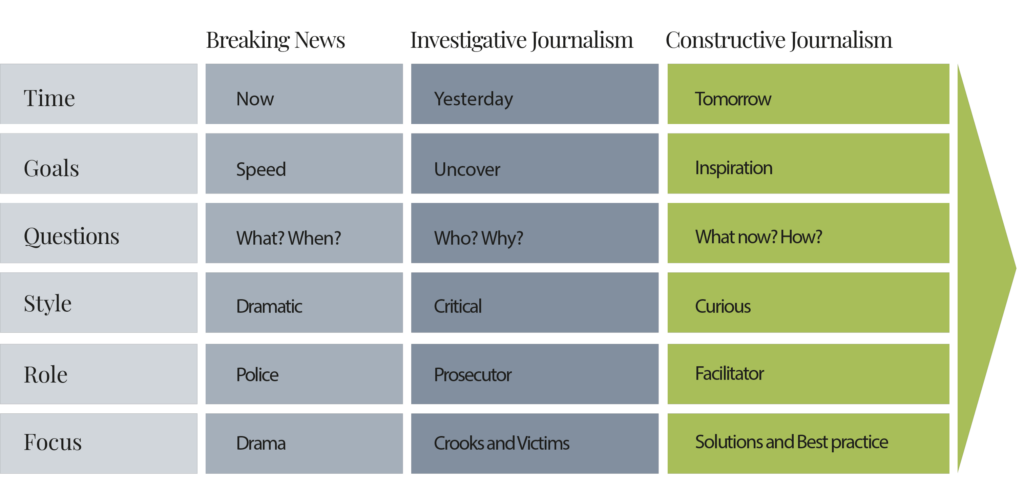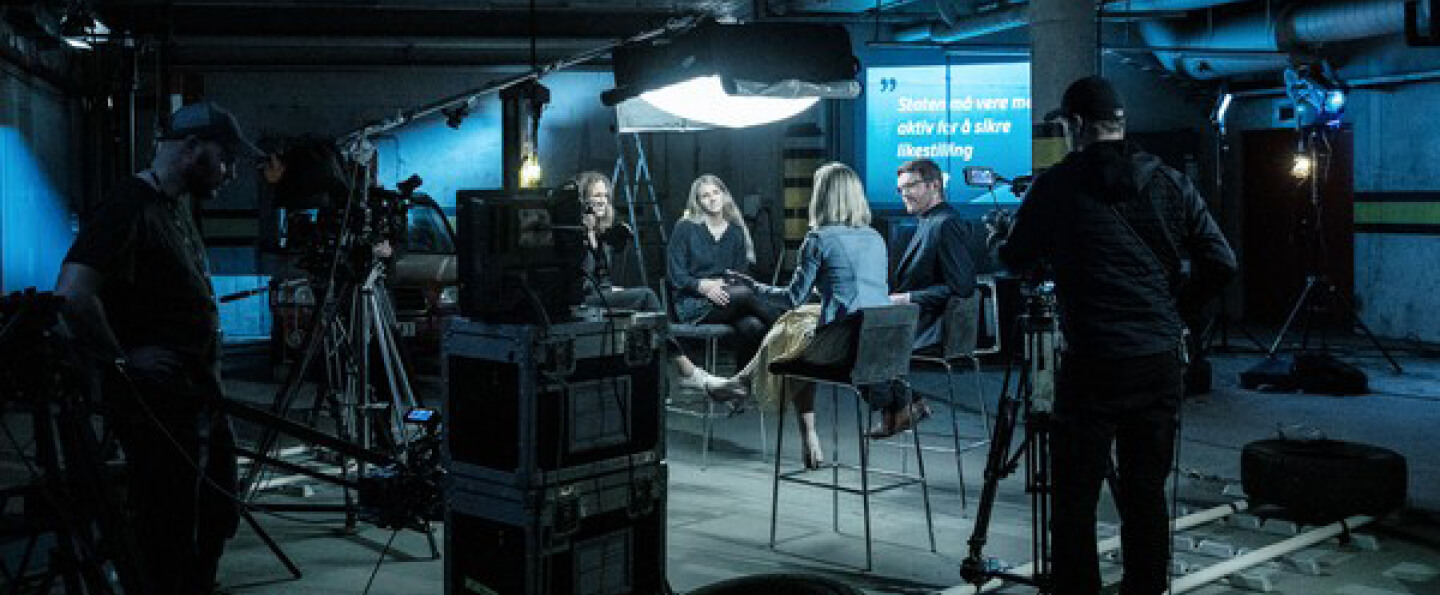Audiences are fed up with the sensationalism and negativity bias of the news — but the media can still correct course, and in turn better serve our democracies.
Constructive journalism is an editorial approach that goes beyond reporting with the “if it bleeds it leads” culture so that we get the full story, not just half the picture. The Three Pillars – solutions, nuance and democratic conversation – are the foundation of constructive journalism practice.
Why we need constructive journalism
Constructive journalism is a response to increasing sensationalism and negativity bias of the news media today. Its main mission is to reinstall trust in the idea that shared facts, shared knowledge and shared discussions are the pillars on which our communities balance – and it centers the democratic function of journalism as a feedback mechanism that helps society self-correct.
The internet consequent digital disruption has had seismic impacts on the news industry. Not only have business models for journalism been shaken and competition for the attention of news audiences exacerbated, but news has also sped up, increased in volume and become increasingly sensationalist. Traditional news reporting is often biased on the side of negativity and cynicism, forgetting to contextualize the news of the day with relevant context and research.
This imbalance has resulted in people grossly overestimating the negative and under-estimating whatever progress has been made on a particular issue. Surveys across the world show that what the public believes about their countries is often far from the truth. Life is better than they think. People rate the performance of their societies much more poorly than the reality. This has consequences for how people live, vote and treat one another.
Political polarization has also encouraged the growth of partisan agendas online, which together with clickbait, algorithms feeding on outrage and various forms of misinformation, help to further undermine trust in media – raising new questions about how to deliver balanced and fair reporting in the digital age. Business as usual is no longer an option for news organizations.

That’s why we came up with constructive journalism. It is not positive, uncritical news, an alternative to watchdog reporting or a quick fix to the media industry’s problems. Instead, it recognizes that in order to serve democracy, quality reporting must be critical, inspirational, nuanced and engaging.
Constructive journalism applies a new vocabulary, so both news people and the people we serve can have a better conversation, both about what is missing in traditional reporting and also how we can do it better with new questions, new focus, new roles, new concepts and new tools. Read more about the trust meltdown in our societies, and how constructive journalism can help, from Constructive Institute founder Ulrik Haagerup.
How it works
In practice, constructive journalism focuses on important societal issues, setting them in the bigger picture and in their relevant context. It serves as an additional layer to both breaking and investigative journalism, and it rejects the “if it bleeds, it leads” approach of traditional news coverage.
After fulfilling the role of policeman, documenting evidence; then the role of judge, investigating evidence and pronouncing judgment; the constructive journalist will then act as facilitator, looking for a way beyond the problem. It is a shift which looks to the future and seeks to leave the news audience inspired, hopeful and motivated.

The culture shift impacts every step of the workflow of the newsroom:
Constructive journalists covering politics, for example, focus less on horse-race election coverage – who’s up and who’s down in polls or fundraising – and more on the details that voters need to make informed decisions at the ballot box. This approach steers politicians away from partisan talking points and toward concrete proposals to address society’s most pressing challenges.
The Three Pillars of constructive journalism
Focus on solutions
Constructive journalism is rigorous and critical in its approach, both when it comes to reporting on problems and progress. It covers responses to well-documented problems, changing the focal point of the story from the problem itself to efforts to solve it.
The aim of constructive journalism is not activism. It doesn’t engage in “feel good” stories or look at the world through rose-tinted glasses. Instead, the goal is to vigorously report on possible solutions to important social issues.

How To Incorporate Solution-Focused Stories into Radio Newscasts
Newsroom: NDR (Germany)
Cover nuances
In many ways, constructive journalism takes reporting back to its core values where it is balanced, fair and non-sensational. This coverage is calm in tone, being less focused on tabloid-style scandals, conflicts and outrage.
Ultimately, the goal is to help the public form an accurate picture of the world they live in, not a simplistic one. Rather than painting issues in black and white, constructive journalism embraces complexity – trusting that audiences prefer the full, nuanced story to the dumbed-down version.

How To Embrace Nuance in Political Coverage
Newsroom: Berlingske (Denmark)
Promote democratic conversation
This pillar aims to serve democracy and combat political polarization by fostering civil discourse, engaging audiences and increasing trust in the media. The aim is not to aggravate problems, spark conflict or take a stance on divisive issues, but to facilitate critical debate about possible solutions so that the issue can be moved forward.
An example we love: ZEIT ONLINE’s My Country Talks project has matched more than 200,000 political opposites for 1:1 discussions in a bid to bridge social and political divides.

How To Host A Civil And Curious Political Debate Show
Newsroom: NRK (Norway)
We work closely with other organizations that aim to revitalize the news media. Key related approaches include solutions journalism, which focuses on the first of our Three Pillars, and dialogue journalism, which focuses on journalists’ work to engage audiences, foster civil discourse and increase trust in the media.
